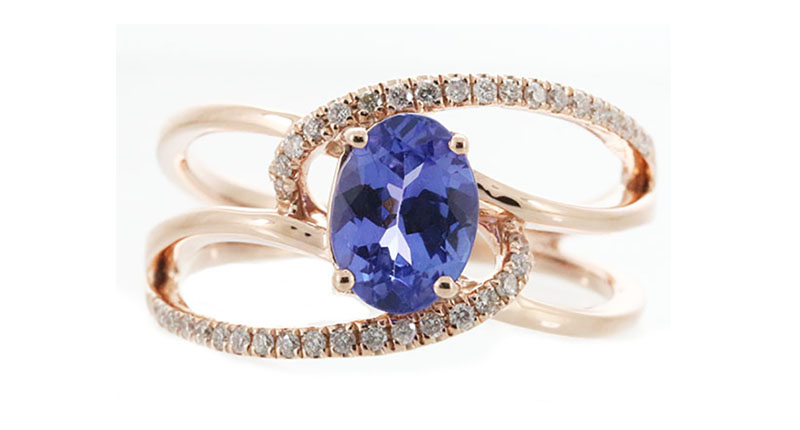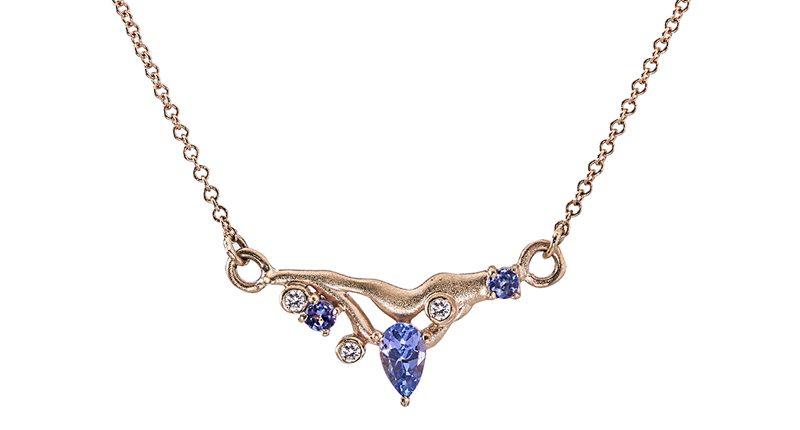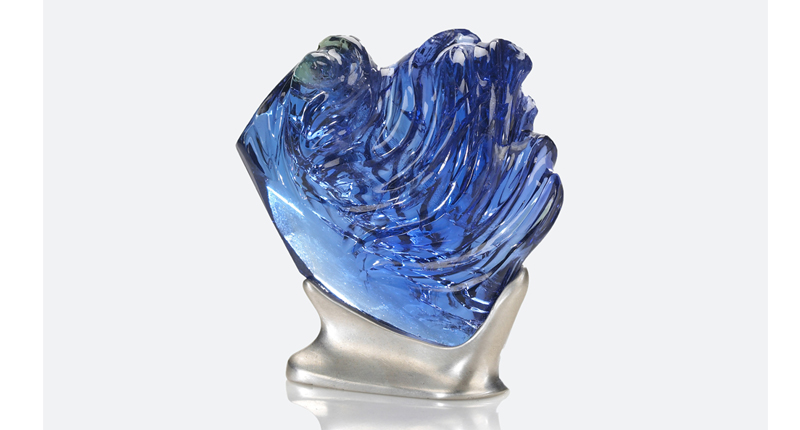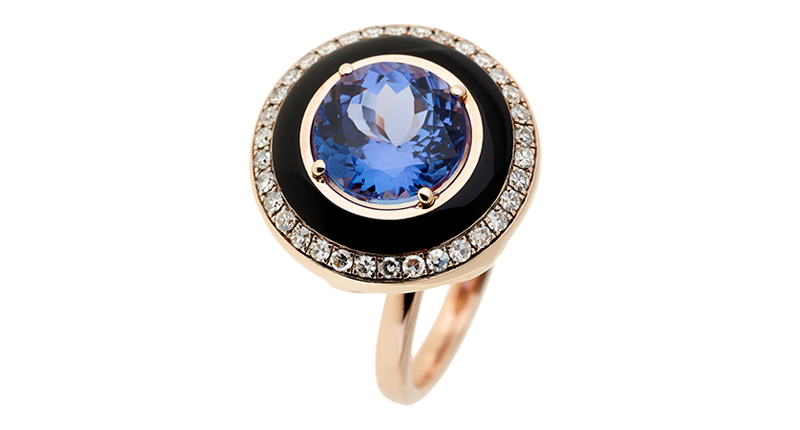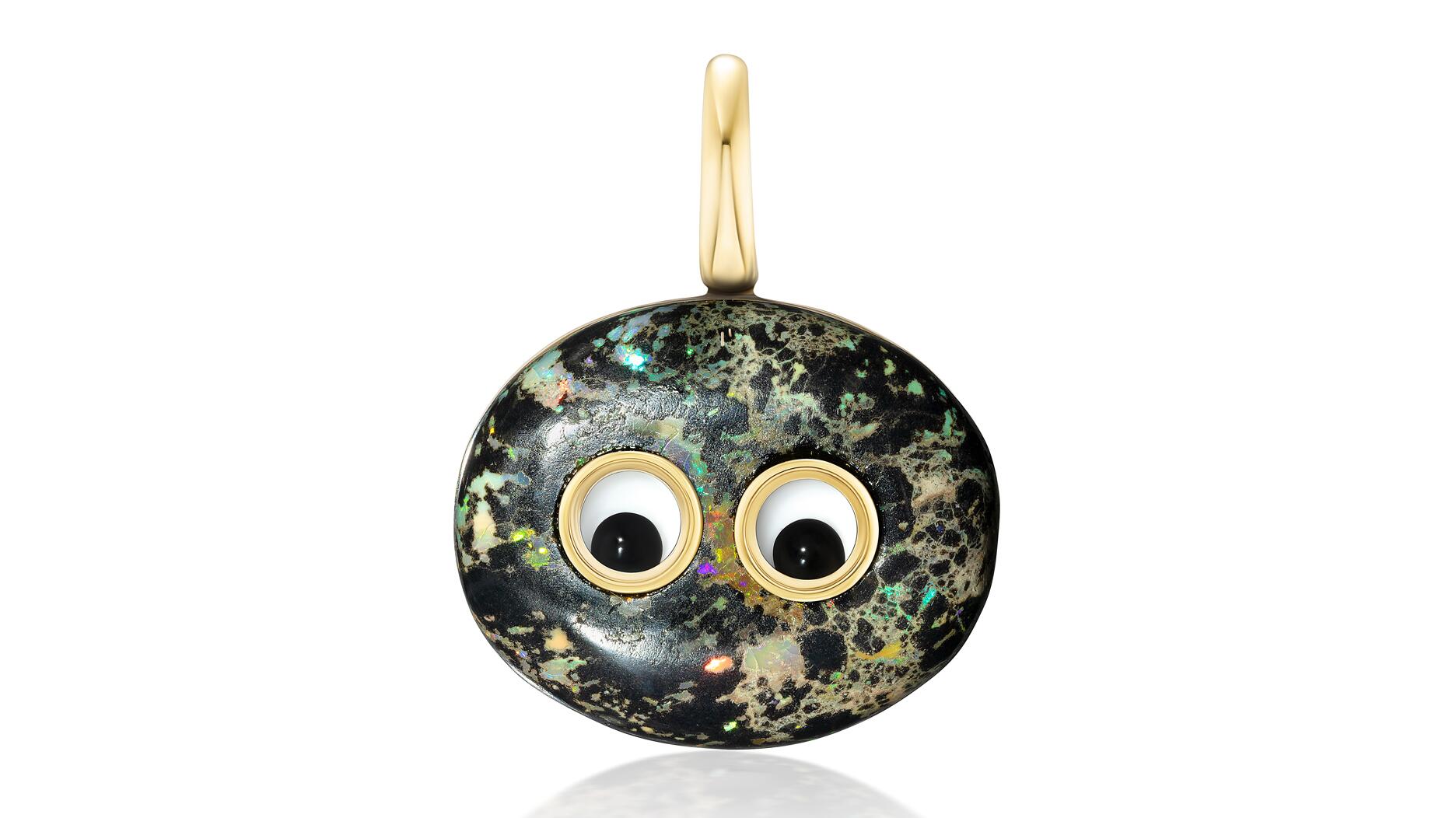As part of the leadership transition, Sherry Smith will take on the role of vice president of coaching strategy and development.
Another Golden (Gem) Anniversary: Tanzanite Turns 50
Five decades after the discovery of the popular blue gemstone, here’s where the market is today.

Tanzanite turned 50 this year, and there are a number of reasons to celebrate and highlight the stone: a fine quality tanzanite can compete with some of the best in color, and the gemstone’s story is so interesting because it shares such a strong connection to its place of origin.
In 1967, a Maasai tribesman came upon blue crystals in northern Tanzania. He alerted a local prospector named Manuel d’Souza, who figured out that it was, in fact, a new gemstone that had been discovered.
Campbell Bridges, known for his discovery of tsavorite garnet (which also celebrated 50 this year), then helped bring the stones to the West and to the attention of Tiffany & Co., which named tanzanite after its country of origin and brought it to the gem market with an official launch in 1968, according to the Tanzanite Foundation.
The stone has risen in popularity in the colored stone world and, in fact, was added to the birthstone list in 2002. And yet even today, the foothills of Mount Kilimanjaro remain the only place where tanzanite is mined.
There are very few instances where a gemstone is so closely tied to the land from which it is sourced, making tanzanite unique in the world of gems. Because the gem is sourced solely in that area, it’s also closely tied to the political climate in Tanzania and there’s a significant amount in flux there right now.
The Current Events
In May, President John Magufuli fired the mining minister and the chief of the state-run mineral audit agency, according to Reuters, after an investigation into the possibility that some mining companies weren’t declaring all exports in order to evade taxes.
Then in September, the government ordered the military to build walls around the tanzanite mines to control the supply as it leaves the mining site. This came, it said, in response to an investigation that found many cases of smuggling.
That same month, Magufuli announced that he had signed into law new mining bills that required the government to own at least a 16 percent stake in mining projects.
The law also increased duties on gold and minerals, which, among other things, increased the taxes on rough gemstones to be exported from the country.
Gemstone cutter Roger Dery, who travels to Tanzania a few times a year, said he thinks the government’s move to be more stringent
Still, he doesn’t think that the increased duties and prices of tanzanite will act as a deterrent for sellers, especially those dealing in larger stones.
After all, demand for the stone is still high, he said, especially for him: “Within the past year, I’ve sold more tanzanite than I can ever recall.”
Bruce Bridges, son of Campbell Bridges, said via email that he’s seeing a lower supply of tanzanite right now, due in large part to what’s happening on the ground over there.
He said all of these actions have led to a decrease in confidence in the gem sector there. “When confidence is down, investment in mining goes down, which leads to less supply.”
Additionally, he noted another factor coming in to play.
All of the hurricane activity the Caribbean saw this fall, and the devastation that came to so many islands as a result, has had a massive impact on tourism to the area. Since a decent amount of tanzanite is sold through cruise ship tourism, which has been so affected by the hurricanes, there are fewer potential buyers of tanzanite.
So due to a combination of factors--a decreased supply accompanied by a decreased demand--Bridges said prices are fairly stable.
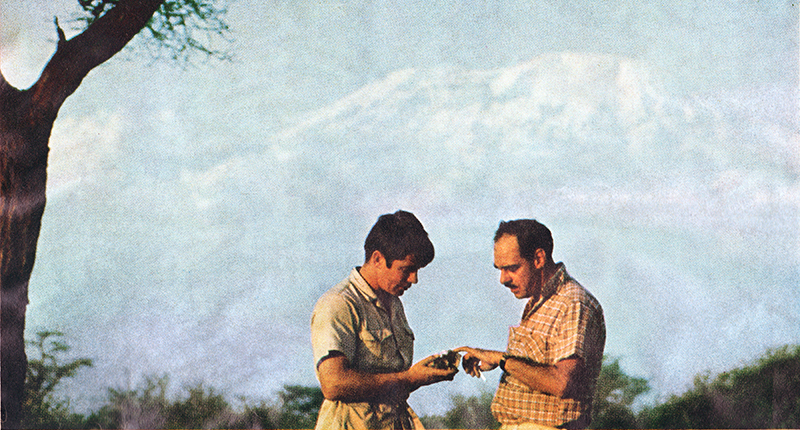
Alan Hackman of Intercolor echoed that, noting that because the tanzanite mining sector is controlled by only a few--and even fewer who have a strong enough financial backing to hold on to material instead of releasing it as it comes to sell--there’s a lot on the market, so prices are stable.
He also said that while he does think the hurricanes could have an effect on demand, he thinks it will only be a short-term issue.
The Opportunity of Fine Gems
These days, there’s a “reasonably consistent” quality standard across the board, Bridges said. And though that’s accompanied by a slight decrease in the larger, finer materials, no one should have too many issues currently in getting what they need, even if that comes in the form of older stock.
For Intercolor, the biggest change in quality of supply lately has been in the colors; Hackman estimates that 95 percent of the tanzanite they’re seeing now displays more purple than blue.
Given the fact that they believe when tanzanite is cut from the purple axis, the yield is higher--as opposed to cutting from the blue axis, which he believes is weaker and more prone to damage--this change is not necessarily a bad thing, he said.
For Dery and designer and carver Naomi Sarna, getting their hands on the quality they want hasn’t been an issue.
Sarna started working with tanzanite in 2013, telling National Jeweler that she thinks it’s the “most beautiful of the blue stones.”
In addition to her love for the stone, which she says is shared by her customers, Sarna also has a strong connection to Tanzania. She often travels to the country to source gems and currently is part of a project that teaches Maasai women how to make wire-wrapped jewelry as a source of income.
Her most recent venture is to sell “L’heure Bleu,” a carved tanzanite weighing 725 carats. All of the profits from the $500,000 price tag will go toward much-needed eye care for Maasai women.
She’s eager to help provide the seed that will help support a program for these women and the Tanzanian people, who she said are “eager to improve their lot in life.”
Her involvement there provides an example for one of the major conversations in the colored stone sector right now: establishing sustainable practices and livelihoods in gemstone communities.
This support is especially important for a place like Tanzania, where tanzanite and the community around it are so interconnected that every change has a direct impact on the gemstone community.
“Government actions concerning mining, licensing, import and export in the near term will have a resounding effect on the industry and sustainable futures of these gemstones,” Bridges said.
He added: “There is a great history behind tanzanite and a wonderful worldwide market that has been developed. It would be very sad, indeed, if the Tanzanian government were not to help nurture and honor this gemstone’s continued development in a constructive way.”
The Latest

It marks the third time the country has headed the Kimberley Process. Ghana will serve as vice chair.

The new Bulova x Stetson designs highlight two animals often associated with the American West—the bison and the Texas Longhorn.

How Jewelers of America’s 20 Under 40 are leading to ensure a brighter future for the jewelry industry.

Its residency at Yamron Jewelers will run through May 2026.


From influential executives to innovative designers, we pay tribute to the people we said goodbye to this year.

The retailer is expanding into areas with large Indian and South Asian populations.

Roseco’s 704-page catalog showcases new lab-grown diamonds, findings, tools & more—available in print or interactive digital editions.

The Italian brand has opened its first flagship amid the peaks of the Dolomites in Madonna di Campiglio, Italy.

The new curation at the Natural History Museum of Los Angeles County showcases rare gem and mineral specimens in their uncut, natural state.

The couple pleaded guilty to concealing at least $127 million in cash transactions at its precious metals businesses.

Consumers shared concerns about prices, inflation, tariffs, trade, and politics in the survey’s write-in response section.

In February 2026, the auction house will move its headquarters to the former Steinway Hall, a neoclassical landmark on Billionaires’ Row.

The new show will take place Jan. 23-25, 2026.

The former BHP Billiton leader and Gemfields chairman is remembered for his influential leadership throughout his 50-year mining career.

The LVMH-owned brand has partnered with the costume design union to revamp its award for 2026.

The luxury titan inked a deal to acquire an initial minority stake in the jewelry manufacturer with a pathway to full ownership by 2032.

The company’s curation of unsigned vintage and estate jewelry debuted at the Bloomingdale’s in Costa Mesa, California.

In the recent multi-shipment seizure, CBP also found counterfeit Audemars Piguet, Moncler, and Chrome Hearts items.

Jewelers of America execs and National Jeweler editors discuss tariffs, the sky-high gold price, and the engagement that broke the internet.

The luxury goods company said founder Ippolita Rostagno will remain at the brand’s helm.

Laura Burdese, who joined the Italian luxury brand in 2022, will take on the role in July.

Need a gift for the cat lover who has everything? Look no further than our latest Piece of the Week.

It purchased the “Grosse Pièce,” an ultra-complicated Audemars Piguet pocket watch from the ‘20s, for a record-breaking price at Sotheby’s.

The lab-grown diamond grower now offers custom engagement and fashion jewelry through its Kira Custom Lab Jewelry service.

Chandler got his start at Michelson Jewelers and has served as DCA president and CEO since 2001. He will retire at the end of the month.

The boutique is slated to open this week inside Terminal 8, offering pre-owned Rolex watches and more to international travelers.











